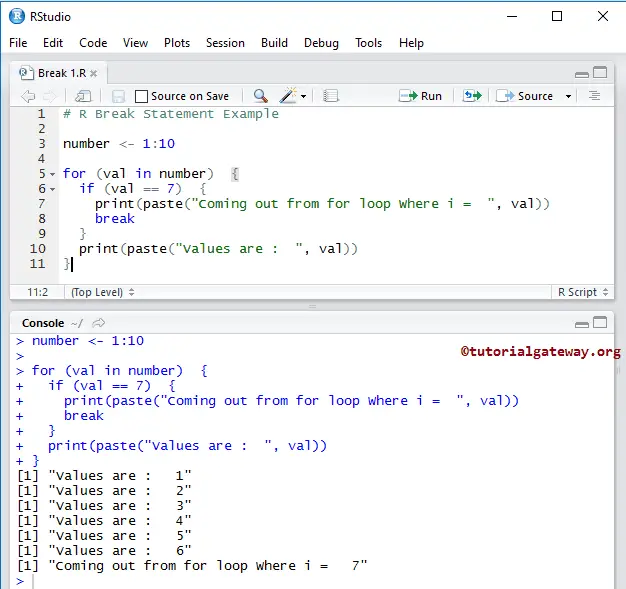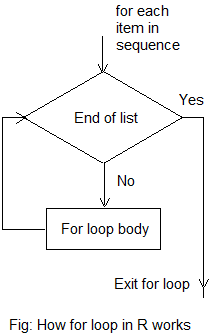
“Looping”/“Cycling”/“Iterating” is a very helpful way to automate a multi-step process by organizing sequences of activities by grouping the parts that need to be repeated. It will apply the specified function to the first element of each argument first, followed by the second element, and so on. The syntax would look something like this:# Create vector quantity # Create vector quantity quantity 50 &quantity 0])) #Results 0.6629146 2.4402103 5.0120875data_apply <- matrix(c(1:20, 11:30), nrow = 5, ncol = 4) data_apply #Result 1 6 11 16 2 7 12 17 3 8 13 18 4 9 14 19 5 10 15 20 # Now we can use the apply function to find the mean/median of each row as follows apply(data_apply, 1, mean) #Result 8.5 9.5 10.5 11.5 12.5tapply() : tapply() basically splits the array based on any data, usually at factor level and then applies the functions to it:We will be using the ‘mtcars’ dataset:library(datasets) tapply(mtcars$wt, mtcars$cyl, median) 4 6 8 2.200 3.215 3.755The ‘tapply’ function first groups the cars together based on the number of cylinders they have and then calculate the median weight for each group.mapply() : ‘mapply()’ is a multivariate version of sapply. Let’s think about a scenario where, for a transition data for a product, we have the information for the number units sold daily for say last 5years and we want to dig deeper and check how many days are there where the number of units sold is between 50 and 70 and for any day, it the value is higher than 70, we mark it as an exceptional day.
#How to ceate a loop in r verification#
In other languages, you may find the (slightly confusing) equivalent called “continue”, which means the same: wherever you are, upon the verification of the condition, jump to the evaluation of the loop.Example of ‘next’ in R codem=5 for (k in 1:m) 1 3 5‘If then else’An if-else statement is a very powerful tool to return output based on a condition. In the end, the program prints the counter ‘ctr', which contains the number of elements that were assigned.Use of ‘next’ in loops‘next’ also discontinues a particular iteration and shift to the next cycle of operation. If the indexes differ, the assignment is performed and the counter is incremented by 1. Then, control gets to the outer for condition (over the rows, index ‘i’), which is evaluated again. When the indexes are equal and thus the condition in the inner loop, which runs over the column index ‘j’ is fulfilled, a ‘break’ command is executed and the innermost loop is interrupted with a direct jump to the instruction following the inner loop. The others are left untouched to their initialized zero value. The purpose was to create a lower triangular matrix, that is a matrix whose elements below the main diagonal are non-zero.
#How to ceate a loop in r code#
Sometimes, rather than breaking out of the loop we just want to skip the rest of the current iteration and start the next iteration: x j mat = i*j ctr=ctr+1 } } print(i*j) } # Result 1 4 9 16 25 # Print how many matrix cell were assigned print(ctr) #Result 10The above code snippet defines an m x n (5 x 5) matrix of zeros and then enters a nested for loop to fill the locations of the matrix, but only if the two indexes differ. In general, we want our code to complete before the end of the world so that it is possible to break out of the infinite loop by including a break statement.


In other languages, it often goes by the name do while, or something similar.

All it does is execute the same code over and over again until you ask it to stop. In R, there are 3 types of loops: ‘repeat’, ‘while’ and ‘for’. ‘repeat’ LoopsThe easiest loop among the 3. Mydata <- rbind(mydata.stay, mydata.R Programming Tutorial By KnowledgeHut “Looping”/“Cycling”/“Iterating” is a very helpful way to automate a multi-step process by organizing sequences of activities by grouping the parts that need to be repeated. #Doing it 3 times for testing purposesĬbind(assign(paste0("NEWAV.", i), mydata$AV), mydata)Ĭbind(assign(paste0("NEWAV.", i), mydata.switch$AV2), mydata.switch) Instead it just keeps them as vectors outside of it. Unfortunately, I'm having trouble storing those new variables into the data frame. So if I loop this over 100 times, I'd have NEWAV.1 to NEWAV.100 variables. My intent is to have a bunch of NEWAV.# variables in my data frame. Mydata <- rbind(mydata.stay, mydata.switch) Mydata.switch$NEWAV.1 <- mydata.switch$AV2 Switch <- sample(which(mydata$AV = 2), 45, replace = FALSE)

Here's the key part that I want to set up in a loop: mydata$NEWAV.1 <- mydata$AV I'm still a bit of a novice R user, and I'm trying to run the following a number of times, each time storing a new variable into my data frame: #Create example data frame



 0 kommentar(er)
0 kommentar(er)
